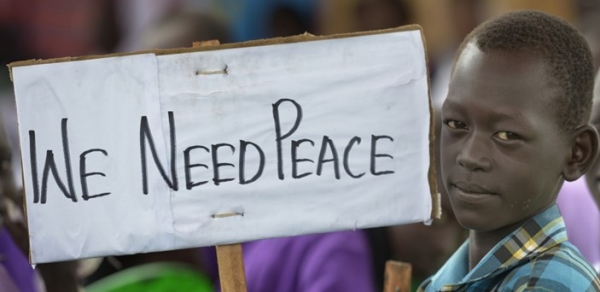Peacebuilding and atrocity prevention have historically been considered as “complementary but distinct” fields of practice. While sharing a common goal of preventing war crimes, crimes against humanity, and genocide, the two areas also present crucial differences in their legal frameworks. In particular, while atrocity prevention is rooted in the context of accountability, encompassing international criminal justice and human rights law, peacebuilding stems from conflict resolution and reconciliation frameworks.
In conflict scenarios, however, the distinction matters little. Practitioners from both fields highlight that emphasising the differences has only prevented integration and cooperation among the various actors involved.
To further explore this topic and better understand the relationship between peacebuilding and atrocity prevention, Peace Direct held a collaborative online consultation for experts and practitioners working in this field. This process yielded an April 2018 report entitled “Atrocity prevention and peacebuilding: key insights” This report contains crucial reflections from their debates, captures their views and presents some essential recommendations to foster greater cooperation in preventing mass violence.
An interesting point of discussion concerns, for example, the identification and analysis of some successful peacebuilding approaches that have been used in atrocity prevention. The debate begins with scrutiny of common features discernible in conflict situations. According to participants, such similarities evidence and reinforce the need to exchange knowledge and experience, so that field practitioners can easily adapt from one context to another. Furthermore, experience demonstrates the importance of embracing an inclusive approach, capable of ensuring community dialogue, peace education, reconciliation, local mediation and the engagement of different actors at local, national and international level.
Experts were also asked to illustrate the main obstacles faced in their efforts to prevent atrocities. These include insufficient or weak institutional governance, the prevalence of non-state armed groups motivated by local disputes, the deep social divisions suffered by many communities with respect to their ethnic and religious identities, the negligent attention and action by regional actors towards the civilian population, hate speech in the media heightening tensions and anger, and the numerous constraints on civil society imposed by some governments including harassment, intimidation and attacks.
Practitioners provided some recommendations for the international community to more effectively prevent future atrocities. These suggestions include raising global awareness of mass human rights violations, undertaking advocacy activities, improving funding structures for peacebuilding operations, providing incentives for governments to reform institutions and address disputes, strengthening national capacities, and self-protection strategies.
While decisive peacekeeping and prompt interventions have shown some promise, these approaches are limited to reacting to violence that is underway. Despite substantial progress in protecting civilian populations from the risk of mass violence, and notwithstanding the international efforts in elevating atrocity prevention to a global aim, we are still far away from preventing these atrocities. Peacebuilding actions usually take place at a late stage, once the violence has commenced. In this scenario, practitioners are of the view that, to effectively impede mass atrocities, peacebuilding and atrocity prevention frameworks require integration. In particular, the international community should invest more on “longer-term early prevention that focuses on local capacity building” and should complement these activities with more robust external responses.
For more information, please visit:
https://www.peacedirect.org/publications/atrocity-prevention-consultation/




